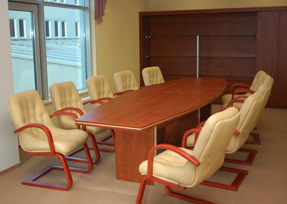Energy savings achieved by using energy efficient systems in offices:
Ensuring that the office runs on energy saving systems can result in up to 40% savings on your energy bill. An energy efficient office should be designed to make good use of natural light. This will help reduce the cost of lighting during the day in fair weather. Proper ventilation for the office will ensure that the cost of cooling the office is also minimal. Combined with energy efficient lighting such as CFLs and HVAC systems equipped with sensors, commercial buildings can offer energy saving office space to small businesses. By installing solar panels on roofs of office blocks, the overall energy expenses will be reduced in the long run.
Reducing unwanted expenditure during after office hours:
A major part of electricity expenditure is incurred on electrical appliances that are plugged in and left on overnight. Though some of these machines may operate round the clock, the actual usage of these devices may not exceed an hour. An example of this is fax machines. Companies should opt for machines with power saving features.. Computers can utilize automatic power setting systems that allow monitors to be turned off automatically if they are not used for a certain duration, eventually the machine can hibernate or power down to save power.
The advantage of power saving appliances in the office space:
Machines that have power management settings often last longer that machines which lack this feature. This is because the machine is not left constantly on and the need for cooling the machine constantly does not arise. These machines are less noisy as the fan does not operate constantly. At the same time these machines do not produce a large amount of heat due to their shorter run times, which in turn, lowers the cooling requirements of the office.
Optimizing space within your office:
The space within the office needs to be optimized in order to truly tap the benefits of natural lighting. The height of internal partitions should be reduced. An alternative is to have glass panels that allow the light to pass through. This will allow natural light entering from the sides of the building to filter more into interior offices and cubicles. Paints that are used within the office space should be matte finish. Light and bright colors help in reflecting the light within the environment. These colors help in reflecting up to 80% of the incident light striking a wall while a dark colored wall would reflect only 10% of the incident light on it.
Using automatic timers for your office lights:
Installing timed controls can help ensure that unwanted lights are switched off after working hours. Manual overrides to turn on only required lights could be provided in case lights are required after hours. Such controls are suitable to be installed in areas such as lunch rooms, corridors etc. Timing should coincide with periods in which the areas are usually unoccupied, such as after cleaners have left, etc.
Involve the staff:
In order to ensure that energy saving schemes work, staff need to be actively involved. Staff need to realize the benefits of saving energy and it needs to be ingrained in them as a habit to turn off unwanted lights and take other energy saving measures.










